Accuphase E-450 Integrated Stereo Amplifier
| Accuphase E-450 Integrated Stereo Amplifier |
| Quicksilver Triumph |
|
|
|
February 2011 |
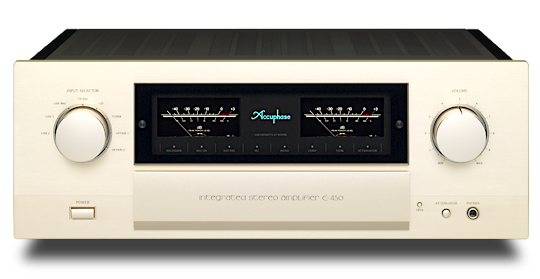
Arriving through the Hickory Gate at the Tanglewood Music Center (“TMC”) this past August, I paused to hear the sound of a lone instrument bellowing (like a bullfrog) through the undergrowth and into the expanse of emerald green lawns that surround this verdant venue dedicated to all Music Lovers. The sound came from an intrepid trombone player who was practicing his deep glissandos from inside one of the wooden practice sheds (with room for just one musician and a music stand), that are scattered about the grounds of the TMC. This lone trombonist projected his refulgent sounds far and wide into the morning sunshine as I made my way to the crown jewel of the TMC, the Seiji Ozawa Performance Hall (“Ozawa Hall”). Ozawa Hall is a marvel of acoustic design with its wooden porches and rotund shoebox shape, a modern version of Symphony Hall, its grand (and more Golden hued) cousin in Boston. The rear wall of Ozawa Hall is designed on rollers so that before each concert, it can be removed to reveal the lawn and hills that lay behind it. On summer evenings, concertgoers picnic on this lawn amid lanterns that illuminate the oak and pine trees that preside over the festivities. On this particular Sunday morning, I arrived to join an overflowing, informally dressed audience, many of whom sported Red Sox AND Yankee attire, co-mingling in an atmosphere of conviviality before the great equalizer of Music.
Ozawa Hall feels like a rustic summer camp dining hall, where musical treats are served up in an acoustic space that can only be described as astonishingly neutral and mercurial. Music flows forth from its stage with remarkable clarity, vibrancy, and lightness, with a resulting vividness to instrumental timbres and vocal nuances that is stunning to experience. For instance, on this particular Sunday, solo clarinetist Ryan Yure began Mario Davidovsky’s Synchronisms No. 12 (2006) with several short, high trills that burst like rapid fire into the Hall; each reedy note distinct and tart. These bursts were followed by an abrupt, airy silence and then by a cacophony of percussive sounds invading from every corner of the auditorium. A surround sound system had been employed to accompany the solo clarinetist in a riotous dialogue, with each hit of recorded wood block, drum or triangle sounding crisp and vibrant. The air was charged with this Jackson Pollock display of flying instrumental colors; each note distinct and tactile in the quicksilver ambience of Ozawa Hall. Similarly, in a performance of William Schuman’s In Sweet Music: Serenade on a Setting of Shakespeare, Elizabeth Baldwin’s soprano voice suffused the Hall with a ravishing tone; each delicate intonation and nuance of her voice heard distinctly. At the piece’s conclusion, Baldwin held one note seemingly forever; first, mezzo forte and then ending in the faintest of a whisper. Ozawa Hall’s superb acoustics allowed one to hear how this final whispered vocal curled, (like a wisp of decaying smoke), from Baldwin’s lips into the expanse of the Hall; extinguishing itself somewhere deep in the recesses of the surrounding lawn and the greenery of the Berkshire Hills beyond.
Canto Primo
Ozawa Hall’s gloriously mercurial acoustics serve as piquant analogies to describing the sonic qualities of the product under review here, the Accuphase E-450 Integrated Stereo Amplifier (“E-450”). I was introduced to Accuphase electronics by the sage and amicable Maurice Schmir, he of Dyana Audio, (www.dyanaaudio.com) located in Eliot, Maine. I listened to a pair of Accuphase amplifiers drive TAD Reference One loudspeakers with great panache in Dyana Audio’s fine listening room and yearned to hear more of this same visceral excitement in my systems. The Accuphase 180W stereo E-450 ($12,000) arrived thereafter, packed in a container reflective of the meticulous care taken in the design of this hand built product from Japan. The E-450 sits in the middle of Accuphase’s integrated amplifier product lineup, that includes the costlier E-560 (fully Class A, 60W/ch into 4 Ohm load, 30W stereo into 8 Ohm load) and the less expensive, E-350 (ClassA/B, 140W/ch into 4 Ohm load, 100W stereo into 8 Ohm load). The E-450 incorporates a plethora of proprietary technologies from the Accuphase design team. One of the most important is Accuphase’s “AAVA” volume control technology; a preamplifier topology that eliminates conventional volume controls and variable resistors from the signal path. The AAVA electronic circuit unites amplifier and volume control functions in one pathway carried out entirely in the analog domain. I found the volume control of the E-450 (engaged manually or via its remote control) to be extremely quiet and precise. Even more impressive was how at lowest volume, the E-450 preserved the physical presence, size and inner dynamics of instruments and vocals. As for its amplifier section, the E-450 incorporates proprietary circuitry called “MCS+”, whose underlying principle is the driving of multiple circuits in parallel. Accuphase claims that this circuitry design results in significant performance improvements in the areas of S/N ratio and THD. The E-450’s output stage combines triple parallel push-pull power MOS-FETs. Its robust transformer power supply drove the most power hungry loudspeakers that I had on hand, the (87 dB rated) Hansen Prince V.2, with aplomb in my (31’L by 14’W) listening room.
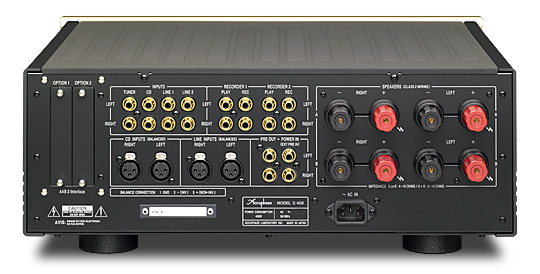
The E-450 is also a Japanese Swiss Army Knife when it comes to form and function in an integrated amplifier design. Fit and finish is superb. This 50 lbs. Beauty comes with a full array of balanced and unbalanced inputs and outputs with connections for bi-amping and for driving two sets of loudspeakers. Its gleaming champagne faceplate contains easily readable power meters as well as a full compliment of ergonomic switches (concealed in a recessed drawer) that includes: tone, balance and mono controls; loudness compensator and attenuator controls; recorder and copy selector and preamp/power amp separators. The E-450 also contains a dedicated headphone amplifier and jack (with its signal coming directly from its preamp section). Listening through Sennheiser HD 650 headphones via the E-450 headphone section was superb; stunningly quiet and with that special gift again of delivering the presence and clarity to inner voices and musical details at low volume. Finally, the E-450 also incorporates expansion capabilities, including a rear slot for Accuphase’s optional AD-20 analog disc input board, and an elegant phonostage solution compatible with both MM and MC cartridges. I found The E-450 built for a lifetime of enjoyment, (as it should be at this price point), offering all the functional equivalent of separates in a one-box, ergonomically artful design.
Canto molto appassionato
Turning to its sonic qualities, the E-450 shares many of the sonic attributes heard in live performance on that August day last summer within the quicksilver ambience of Ozawa Hall at the TMC. As with Ozawa Hall, the E-450 revels in a natural aliveness, a brilliant clarity to textures and musical purpose that, if the recording allows, brings the listener closer to the inner world of the composer and the musicians at play. With the E-450, music pulsates with light and colorful energy, bursting forth from every set of loudspeakers employed with a clarity and articulation to individual strands of musical lines that is riveting, while at the same time, allowing for that special Wholeness of a musical statement to flow forth. As with music played in Ozawa Hall, there is a sense of unforced power and a delineation of musical details in the most natural of ways in the E-450’s presentation. A great example of this was listening to the music of India; in recordings of its classical forms as well as in recordings where artists mine that continent’s rich musical heritage to forge new musical statements. Classical Indian Ragas can really test an amplifier’s ability to reproduce realistic timbre and tone, the nuances of micro- and macro-dynamics and the transient speed of notes as strings and drum surfaces are struck rapidly or caressed gently. The original session recordings of Sarod Master Ustad Ali Akbar Khan, accompanied by Pandit Mahapurush Misra on Tabla, are captured in all their sonic and meditative glory in the “Signature Series” of recordings made available through Alam Madina Music Productions (www.ammp.com). In the furious conclusion of “Rag Medhavi”, (from Signature Series Vol.2), Khan and Misra joust with beautiful swooning notes back and forth. Plush textures meld into sharp staccato jabs, with fantastical string figures racing up and down Khan’s Sarod. 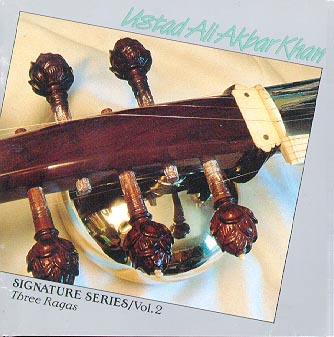
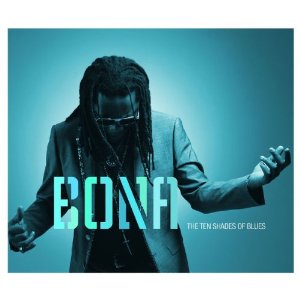 Leave it to the genius of Richard Bona to combine these same traditional Indian instruments into a modern amalgam of equal parts sweetness and sway in his “Shiva Mantra” that appears on Bona’s eclectic gem, The Ten Shades of Blues [Decca 4085]. Bona’s “Mantra” combines soaring female and male Indian vocals; huge swashes of keyboard chords and plunging bass notes; swashbuckling brass accompaniment and twinkling sitar and hand percussion accents. The E-450 maintained a wonderful focus and fidelity to all this complex drama, with everything from the tap of the tambourine shiny and bright to the deep plunge of synth tones bursting with explosive power and rich tonal density. This particular recording provides a very deep and wide soundstage canvas upon which Bona paints his vibrant creations. The E-450’s soundstage was first rate in throwing a spacious lateral soundstage, (with great image dimensionality) but its depth was a bit less successful, with layering to the back wall slightly less expansive. Bona’s complex canvas of sound also revealed how ruthlessly transparent the E-450 was to sources and associated equipment. For example, with the E-450 in place, I was able to appreciate the improvements made by upgrading my reference DAC, the Audiomat Maestro, to Audiomat’s latest model, their “Maestro2” DAC. (info at www.mutine.com) The original Maestro, (as I wrote in these pages in 2006), is, (like the E-450), a special conduit to the inner workings of favorite recordings, mining every nook and cranny. However, with the Maestro2 upgrade, Bona’s dynamically demanding creations were revealed with far more freedom and expansiveness than heard with the original Maestro. The E-450 revealed how the Maestro2 was noticeably superior in maintaining tone and timbre in demanding dynamic swells, particularly in the frequency extremes. A second example was the marvelous partnership shared between the E-450 and TARA Labs cabling. In 2008, I wrote about TARA Labs “The One” Speaker cable and “ISM 0.8 Interconnects” and rejoiced in their ability to communicate silences, the natural decay of notes and a solidity and weight to instrumental bodies and tonal colors that was enticing. These qualities were even more impressive when partnered with the E-450. The E-450’s uncanny clarity to inner voices and its highlighting of musical details was delivered optimally with the TARA Labs cables in place, as they contributed their special quality of solidity and natural weight to all of these arresting inner details and colors revealed by the E-450.
Leave it to the genius of Richard Bona to combine these same traditional Indian instruments into a modern amalgam of equal parts sweetness and sway in his “Shiva Mantra” that appears on Bona’s eclectic gem, The Ten Shades of Blues [Decca 4085]. Bona’s “Mantra” combines soaring female and male Indian vocals; huge swashes of keyboard chords and plunging bass notes; swashbuckling brass accompaniment and twinkling sitar and hand percussion accents. The E-450 maintained a wonderful focus and fidelity to all this complex drama, with everything from the tap of the tambourine shiny and bright to the deep plunge of synth tones bursting with explosive power and rich tonal density. This particular recording provides a very deep and wide soundstage canvas upon which Bona paints his vibrant creations. The E-450’s soundstage was first rate in throwing a spacious lateral soundstage, (with great image dimensionality) but its depth was a bit less successful, with layering to the back wall slightly less expansive. Bona’s complex canvas of sound also revealed how ruthlessly transparent the E-450 was to sources and associated equipment. For example, with the E-450 in place, I was able to appreciate the improvements made by upgrading my reference DAC, the Audiomat Maestro, to Audiomat’s latest model, their “Maestro2” DAC. (info at www.mutine.com) The original Maestro, (as I wrote in these pages in 2006), is, (like the E-450), a special conduit to the inner workings of favorite recordings, mining every nook and cranny. However, with the Maestro2 upgrade, Bona’s dynamically demanding creations were revealed with far more freedom and expansiveness than heard with the original Maestro. The E-450 revealed how the Maestro2 was noticeably superior in maintaining tone and timbre in demanding dynamic swells, particularly in the frequency extremes. A second example was the marvelous partnership shared between the E-450 and TARA Labs cabling. In 2008, I wrote about TARA Labs “The One” Speaker cable and “ISM 0.8 Interconnects” and rejoiced in their ability to communicate silences, the natural decay of notes and a solidity and weight to instrumental bodies and tonal colors that was enticing. These qualities were even more impressive when partnered with the E-450. The E-450’s uncanny clarity to inner voices and its highlighting of musical details was delivered optimally with the TARA Labs cables in place, as they contributed their special quality of solidity and natural weight to all of these arresting inner details and colors revealed by the E-450.
Turning from Richard Bona’s brash, world spinning creations to the world of intimacy and quiet drama, the E-450 revealed, (like Elizabeth Baldwin’s faint, final whisper melting away into the recesses of Ozawa Hall), how it could transform a musical signal into a living, breathing image full of lightness, crackling inner detail and suppleness. 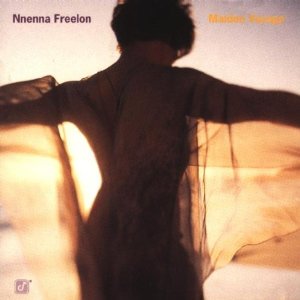 Favorite recordings of vocalists with sparse accompaniment were a great test for the E-450’s ability to capture every nuance of vocal intonation and expression. For instance, take a listen to the regal Nnenna Freelon on her soulful rendition of Sippie Wallace’s “Woman Be Wise” from her Maiden Voyage [Concord Records 47942], where Freelon freelances around Bob Mintzer’s swanky bass clarinet and Joe Beck’s warm guitar with a combination of swagger and lissome breeze. The E-450’s limpid quality allowed one to hear how Freelon hangs onto the ends of her warm vocals with a languid emphasis, curling around syllables with creative spontaneity. Mintzer’s final, breathy plunge was all spittle and tactile velvet down low, (with great composure and focus) decaying softly into the recording space.
Favorite recordings of vocalists with sparse accompaniment were a great test for the E-450’s ability to capture every nuance of vocal intonation and expression. For instance, take a listen to the regal Nnenna Freelon on her soulful rendition of Sippie Wallace’s “Woman Be Wise” from her Maiden Voyage [Concord Records 47942], where Freelon freelances around Bob Mintzer’s swanky bass clarinet and Joe Beck’s warm guitar with a combination of swagger and lissome breeze. The E-450’s limpid quality allowed one to hear how Freelon hangs onto the ends of her warm vocals with a languid emphasis, curling around syllables with creative spontaneity. Mintzer’s final, breathy plunge was all spittle and tactile velvet down low, (with great composure and focus) decaying softly into the recording space. 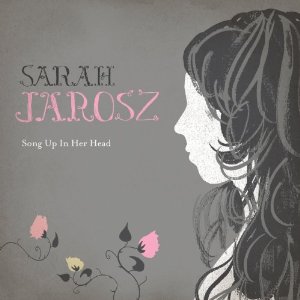 In contrast to Freelon’s warm vocal solidity, there are the soaring, fragile vocals of newcomer Sarah Jarosz on her debut recording, Song Up In Her Head [Sugar Hill Records 4049]. Here, Jarosz’s feathery light vocals are wrapped in the gorgeous filigree of mandolin, fiddle and clawhammer banjo textures. The E-450’s exceptional powers of revelation and resolution to high treble colors caught Jarosz in full flight; focused and pungent with fidelity to every nuanced intonation and change of fragile harmonic step. Sink your teeth into that tart apple!
In contrast to Freelon’s warm vocal solidity, there are the soaring, fragile vocals of newcomer Sarah Jarosz on her debut recording, Song Up In Her Head [Sugar Hill Records 4049]. Here, Jarosz’s feathery light vocals are wrapped in the gorgeous filigree of mandolin, fiddle and clawhammer banjo textures. The E-450’s exceptional powers of revelation and resolution to high treble colors caught Jarosz in full flight; focused and pungent with fidelity to every nuanced intonation and change of fragile harmonic step. Sink your teeth into that tart apple!
Cadenza
The E-450’s special gifts were also evident on favorite piano recordings, where midrange and upper octave harmonics can get abbreviated into sheets of glass rather than notes projected from hammers, strings and felt.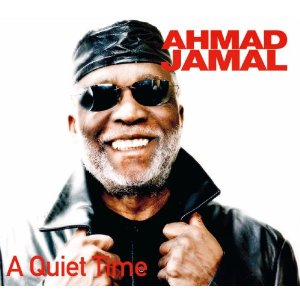 When the Master Keyboard Traveler, Ahmad Jamal, sashays gently and then erupts into one of his huge patented crescendos, (as in his composition “Flight To Russia” taken from his latest gem, A Quiet Time [Dreyfus Jazz 369452]), the E-450 was in its element; explosive in rhythmic drive top to bottom, keeping pace with every one of Jamal’s flourishes and his exacting touch upon the keys. It is true that the E-450 does indeed excel with more energy in the upper midrange and treble regions, (quick and to the point without editorial comment), reminding again of the quicksilver, light ambience of notes projected in Ozawa Hall. But for this reviewer, I think the E-450’s sonic signature edges closer to the true timbres of instruments and voices, bracing and invigorating as those are heard in live performance. For my bucket of joy, I’d wish for another afternoon of listening to music in Ozawa Hall just to hear its extraordinary clarity and the way single instruments stand out in bold relief. The E-450’s sonic signature reminds me of many of those same characteristics. I, (like many of you) have spent a long time saving for such expensive and major purchases as the E-450, with the goal of enjoying it as a centerpiece and reference for years to come. I made the decision to spend my hard earned savings on the review sample, relishing the opportunity to hear the E-450 into the future, offering as it does a rewarding slice of that live, limpid musical truth heard at Ozawa Hall on my favorite recordings.
When the Master Keyboard Traveler, Ahmad Jamal, sashays gently and then erupts into one of his huge patented crescendos, (as in his composition “Flight To Russia” taken from his latest gem, A Quiet Time [Dreyfus Jazz 369452]), the E-450 was in its element; explosive in rhythmic drive top to bottom, keeping pace with every one of Jamal’s flourishes and his exacting touch upon the keys. It is true that the E-450 does indeed excel with more energy in the upper midrange and treble regions, (quick and to the point without editorial comment), reminding again of the quicksilver, light ambience of notes projected in Ozawa Hall. But for this reviewer, I think the E-450’s sonic signature edges closer to the true timbres of instruments and voices, bracing and invigorating as those are heard in live performance. For my bucket of joy, I’d wish for another afternoon of listening to music in Ozawa Hall just to hear its extraordinary clarity and the way single instruments stand out in bold relief. The E-450’s sonic signature reminds me of many of those same characteristics. I, (like many of you) have spent a long time saving for such expensive and major purchases as the E-450, with the goal of enjoying it as a centerpiece and reference for years to come. I made the decision to spend my hard earned savings on the review sample, relishing the opportunity to hear the E-450 into the future, offering as it does a rewarding slice of that live, limpid musical truth heard at Ozawa Hall on my favorite recordings.
*Reviewer’s Update Note: Please take note that at the time of the completion of this review, Accuphase has replaced the Model E-450 with a new model, the Model E-460. Please refer to Accuphase’s official website for all information on the Model E-460 and refer all inquiries to Accuphase’s official distributor, as listed below.
Accuphase E-450 Specifications
Average Output Power: 260 watts per channel into 4 ohms; 220 watts into 6 ohms;
180 watts into 8 ohms;
Frequency Response: Power in: -0.2dB; 20-20,000 Hz
THD: 0.05% with 4 to 16 ohm load
Intermodulation Distortion: 0.01%
Input Sensitivity and Impedance: Balanced¬¬=40kOhm; for rated output, 190 mV;
High level Input= 20kOhm; 190 mV
Load impedance: 4-16 ohms
Power Consumption: 60 watts idle; 450 watts in accordance with IEC 60065
Dimensions: 7”(h) x 18”(w) x 17”(D)
Weight: 53.8 lbs.
Price: $12,000.00
Company Information
Manufacturer:
Accuphase Laboratory Inc.
2-14-10 Shin-Ishikawa, Aoba-Ku, Yokohama, 225-8508 Japan
Website: www.accuphase.com
US Distributor:
AXISS AUDIO
17800 South Main Street, Ste. 109
Gardena, CA. 90248
Telephone: 310-329-0187
Website: www.axissaudio.com
E-mail: info@axissaudio.com
![]()
Don’t forget to bookmark us! (CTRL-SHFT-D)
Stereo Times Masthead
Publisher/Founder
Clement Perry
Editor
Dave Thomas
Senior Editors
Frank Alles, Mike Girardi, Russell Lichter, Terry London, Moreno Mitchell, Paul Szabady, Bill Wells, Mike Wright, and Stephen Yan,
Current Contributors
David Abramson, Tim Barrall, Dave Allison, Ron Cook, Lewis Dardick, John Hoffman, Dan Secula, Don Shaulis, Greg Simmons, Eric Teh, Greg Voth, Richard Willie, Ed Van Winkle, Rob Dockery, Richard Doron, and Daveed Turek
Site Management Clement Perry
Ad Designer: Martin Perry


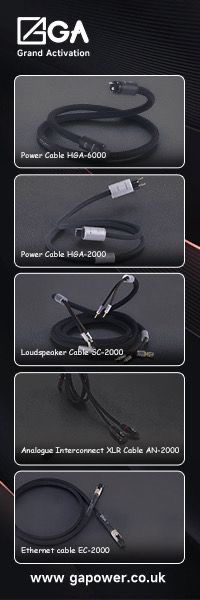


Be the first to comment on: Accuphase E-450 Integrated Stereo Amplifier